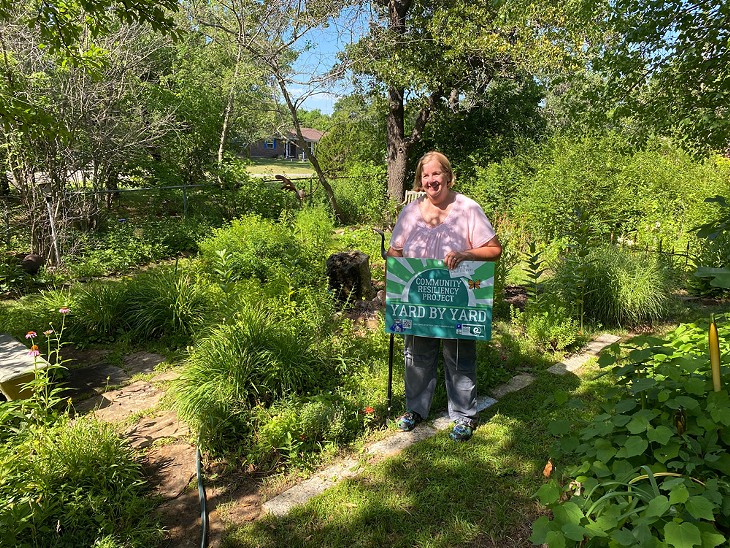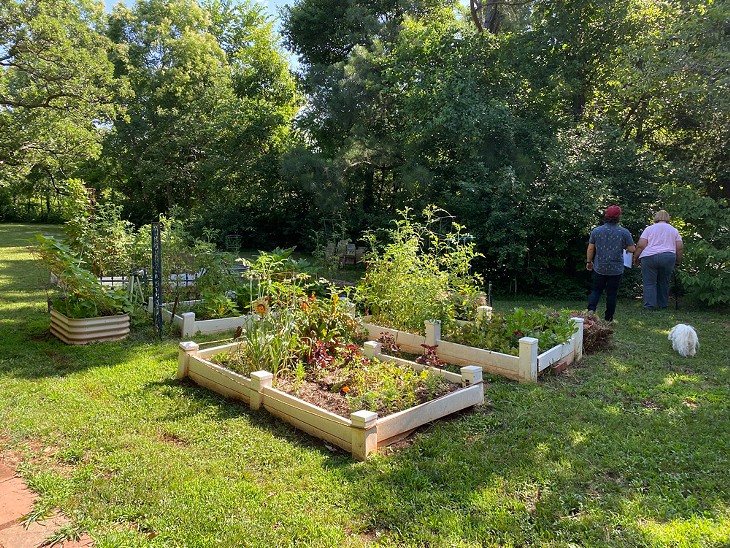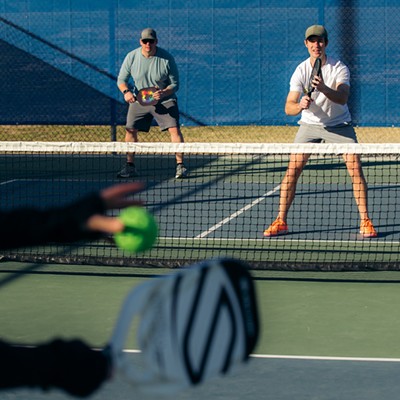“Urban citizens do not always realize what a difference they can make with a few earth-friendly practices,” Josh Kouri with the Oklahoma Conservation Commission (OCC) said.
The director of OCC’s Yard-By-Yard program, Kouri helps Oklahoma homeowners improve the beauty, environmental sustainability and health of their backyards by conducting site visits to consult on yard transformations, certifying yards and providing resources for folks looking to engage in backyard conservation.
Kouri’s mission is personal.
“I grew up rural enough that I had a connection to the land. For good or for evil, humans have influence over the natural world. So we have the duty to use that influence well,” he said.
Today our 40 million acres of urban lawns soak up an estimated 7 billion gallons of water per day on average. A third of all residential water pours through our sprinklers, and 50 percent of that water is wasted by evaporation and runoff.
“Lawns are the number one irrigated crop in the U.S. by land area. More than corn, wheat, anything else is our irrigated lawns,” Kouri said.
Americans doused their residential landscapes in 59 million pounds of pesticides in 2012, according to The New York Times. These chemicals have unintended side effects, drifting over fences, gushing through gutters, making our pets sick, killing beneficial insects and exposing children to a deluge of potentially-harmful chemicals, many of which are already banned in Europe and China.
“Most of the fertilizer you put on your lawn—it’s not going to stay there. It washes into our streams and rivers and causes problems down the line. It causes bacterial blooms and issues with our drinking water,” Kouri said.
The pollution doesn’t stop there. Gas-powered lawn equipment emitted 26.7 million tons of CO2 in 2011. Carcinogens spewed by these backyard beasts have been linked to lymphoma, leukemia and developmental and neurological disorders, according to the Environmental Protection Agency, and children and people with chronic illnesses are particularly vulnerable to their deleterious health effects. Routine use of these machines near homes, schools and public parks is a large-scale but preventable public health risk, especially for lawn workers.
“Even if you have a healthy lawn—you fertilize it organically, you don’t spray pesticides on it—the other problem is that it replaces more beneficial alternatives,” Kouri said.
Native plants are more adapted to our climate, so they tend not to need much additional water or fertilizer. They also support native wildlife.
“There are some things called generalists—they’ll feed on the kinds of non-natives sold in garden centers. But there are also things called specialists, which only feed on one family of flowers. So if we’re not growing those, and destroying their native habitat, we lose those specialists,” Kouri said.
The loss of these specialist bees, wasps, and caterpillars has been linked to declining bird populations. Native plants also have stronger root systems—these deep roots break up soil compaction, reduce water runoff and nourish the fungi and bacteria that turn nonliving dirt into rich soil. With all of this, it’s easy to see lawns as yet another turf for the culture wars.
“I don’t want to make this into something where people are pitted against each other—neighbors who want the traditional home landscape vs. people who see the negative side effects,” Kouri said.
Lawns are ubiquitous, in part, because there are benefits. But Kouri urges homeowners to think about their scale.
“If you are someone who needs a lawn—for kids, or pets, or to get around your property—just really ask yourself: how big does it need to be? You can make it as small as possible without getting rid of it completely,” Kouri said.
Large lawns can become small yards and a beautiful pollinator garden can replace any flower bed.
“We’re trying to find functional and sustainable compromises—ecologically sound landscapes that also enhance the beauty and social function of human spaces.” Kouri said.
To participate in Yard-By-Yard, the homeowner must implement five conservation practices across three of four categories: soil, water, food production, and wildlife habitat, which Kouri then visits. Once certified, participants receive wildflower seeds, a quarterly email newsletter, information sheets and connection to a local network of support and resources.
If this sounds daunting, have no fear—Kouri’s goal is to help folks tailor strategies for their specific site, budget, and timeframe.
“Sometimes a homeowner will rush into something, try to plant a pollinator meadow, but they don’t fully understand the timeframe or the steps to prepare the site… They get burnt out on the process, their neighbors see it, and they think, ‘Oh this stuff doesn’t work,’” he said.
It takes work to restore ecosystems. Once native plant communities are destroyed, invasive and opportunistic plants are quick to colonize the swath of sun and plentiful resources, outcompeting slower-to-germinate native species.
“We want to show people the things we’re preaching enhance the beauty of the places we live. They bring more life, more vibrancy, more greenery through the drought summers into our neighborhoods,”
If you’re looking to green up your slice of Oklahoma, you’re in luck. Spring is a great time to green up your slice of Oklahoma.
To get started this year, smother grass with cardboard weighed down by wood chips or heavy-duty plastic and leave it through the summer—six months minimum. November through January, spread wildflower seeds or plant seedlings mid-spring.
Visit okconservation.org/yardbyyard
Events
Yard-By-Yard is hosting these spring events, all of which are free and open to the public.
May 6 — Martin Park Nature Center — 1 p.m. to 4 p.m.
Welcoming Wildlife: Supporting Birds (and More) at Home
May 12 — Will Rogers Garden — 1:00 p.m. to 4:00 p.m.
Healthy Soils at Home: The Foundation for Resiliency
May 20— Central Park Community Garden — TBD
Wrap-Up Celebration: Putting It All Together











